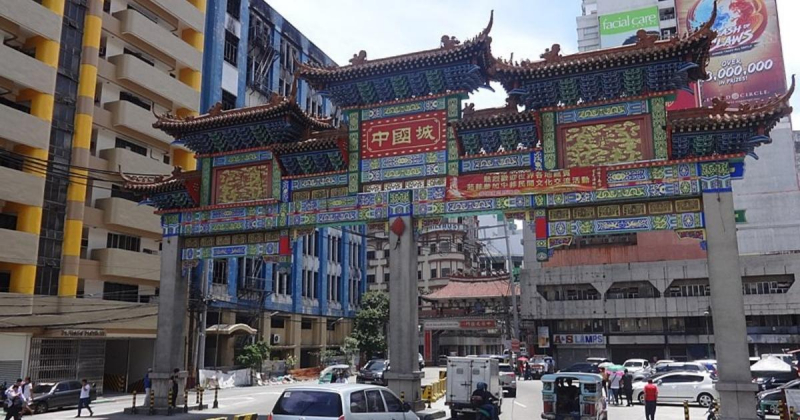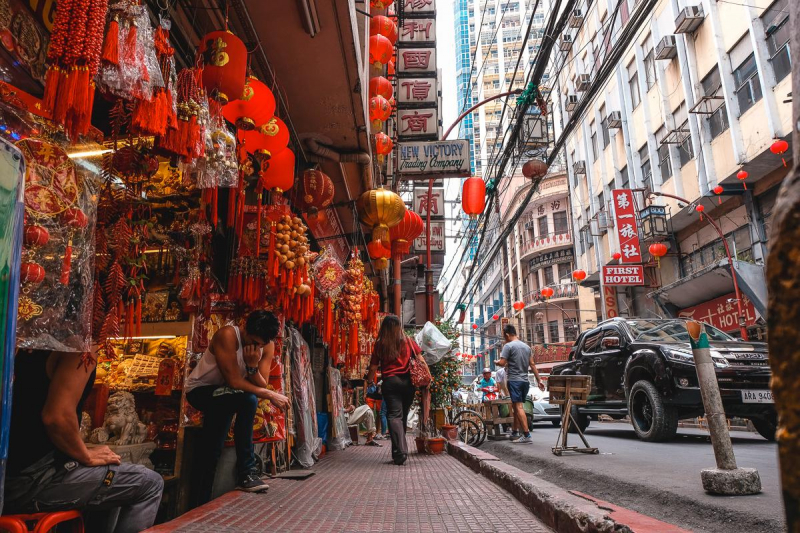Manila, Philippines

Manila’s Chinatown is called Binondo, and it is one of the best Chinatowns in the world, established in the 1590s. Originally founded by Spanish missionaries as a settlement for Catholic Chinese, it was located across the river from the walled Intramuros part of the city. Today, it is not only a slice of history but probably one of the most authentic and least touristic Chinatowns in the world. The Filipino-Chinese Friendship Arch, doubling as the entrance gate to Binondo, is one of the most colorful and pretty of them all. Try the Chinese-Filipino fusion street food on and around Ongpin Street, and don’t skip sampling dishes such as spring rolls, cake, stir-fried noodle dishes, and the siopao steamed buns. The best place to start a tour is on Carvajal Street, otherwise known as Umbrella Alley, which offers some of the best street food in the city.
Manila’s Chinatown displays a mix of influences; the traditional Chinese apothecary selling dried sea horses and ginseng huddles close to a modern bank outfitted with automatic doors and shotgun-toting guards. Chinese restaurants operate next to Italian furniture shops, while Chinese immigrants hawk cheap wares on the street. In the traditional Chinese style, certain streets are known for selling a particular item. Ongpin Street is the king of gold and jade jewelry; Nueva Street vendors sell mainly office supplies. Head to Pinpin Street for furniture, and tiny Carvajal Street for the busy wet market and lunchtime dim sum with the locals.











